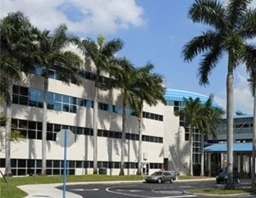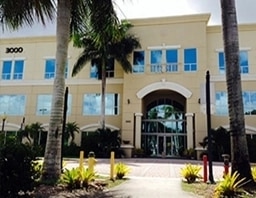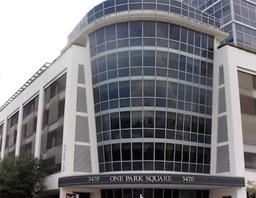
Rosacea is a skin disease that causes redness and pimples on your nose, cheeks, chin, and forehead. The redness may come and go. People sometimes call rosacea "adult acne" because it can cause outbreaks that look like acne. It can also cause burning and soreness in the eyes and eyelids.
Rosacea is a common dermatologic condition. It is estimated to affect approximately 16 million Americans. While the primary presentation of this skin disease is diffuse redness in the cheek area, there are actually four subtypes of rosacea. These include:
- Subtype 1. Erythematotelangiectatic Rosacea, which causes flushing and visible blood vessels.
- Subtype 2. Papulopustular Rosacea, which includes acne-like symptoms alongside redness.
- Subtype 3. Phymatous Rosacea, in which the skin becomes bumpy and thick.
- Subtype 4. Ocular Rosacea, which affects the eyes with swelling or the appearance of a sty.
What Causes Rosacea?
Experts are not sure what causes rosacea. It tends to affect people who have fair skin or blush easily, and it seems to run in families. Rosacea often flares when something causes the blood vessels in the face to expand, which causes redness. Things that cause a flare-up are called triggers. Common triggers include exercise, sun and wind exposure, hot weather, stress, spicy foods, alcohol, and hot baths.
Currently, there is no scientific data that points to a singular cause of rosacea. Instead, there seems to be a variety of influencing factors. These include:
- Genetic makeup
- Problematic facial blood vessels
- Sun damage
- Demodex folliculorum, natural skin mites
- H. pylori bacteria, a natural part of the gut biome
Who is Most at Risk for Rosacea?
There are instances in which doctors cannot identify the reason for Rosacea in a particular case. However, studies do indicate a few common risk factors. These include:
- Having fair skin
- Extensive sun exposure (which can damage superficial blood vessels)
- Having a history of acne, especially severe cystic acne
- Being of Scandinavian, Scottish, English, or European descent
What Are the Symptoms of Rosacea?
A flushed face and pimples or bumps on or around the cheeks, nose, mouth, and forehead are the common symptoms of rosacea. Sometimes the flushing or redness can last for days. Tiny red veins on the face that look like spiderwebs, burning or stinging facial skin, especially when applying lotions or medicines can also be symptoms. Dry, red, irritated eyes are also a sign. The eyelids may look red and swollen, and vision may be blurry. If it is not treated, rosacea can cause serious eye problems.
General symptoms that may occur with rosacea include:
- Burning or stinging sensation in the affected area of the skin
- Drying and roughness of the skin
- Enlarged pores
- Broken blood vessels
- One or more bumps on the eyelid
Rosacea symptoms may fluctuate. They may come and go and worsen with certain triggers. Furthermore, your symptoms may relate to the type of rosacea that you have. Your dermatologist can help you determine your rosacea type and how to best manage your condition.
How is Rosacea Treated?
There is no cure for rosacea, but with treatment, most people can control their symptoms and keep the disease from getting worse. Antibiotic creams or pills may be used to treat redness and pimples. If you use antibiotics, be patient, it can take a month or two before you start to see improvement. Stronger medicines, such as Accutane or Retin-A, may be prescribed if antibiotics don't control your rosacea. Other treatments may also help your skin look better.
Rosacea management may involve a number of strategies. Your doctor may prescribe medication or perform clinical treatments to reduce your symptoms. Treatment is prescribed based on the subtype of rosacea you have. For example:
- Subtype 1 may be treated with topical medication or laser therapy.
- Subtype 2 may be treated with topical medication, laser therapy, or low-dose antibiotics.
- Subtype 3 may be treated in the same way as subtype 2.
- Subtype 4, affecting the eyes, may require steroids or antibiotic eye drops or ointment.
In addition to clinical treatment, rosacea management involves lifestyle changes. First, your doctor will educate you regarding the potential triggers for rosacea flare-ups. You may be advised to avoid excessive sun exposure and to wear broad-spectrum sunscreen every day. If applicable, you may need to avoid certain foods to keep your rosacea under control. While there is no cure for rosacea, a combination of the right remedies and clinical modalities can help you feel more comfortable and confident.
What Are The Different Types of Rosacea?
There are four different types of rosacea. Understanding the difference between each one may help patients understand how best to target their treatments to keep their flare-ups under control.
Erythematotelangiectatic Rosacea
Also referred to as “ETR,” erythematotelangiectatic rosacea is the type of rosacea that most people are familiar with. Causing facial redness that creates a “flushed” look, this rosacea typically appears on the cheeks, nose, and forehead, but sometimes it may spread to the scalp, chin, and neck. People with erythematotelangiectatic rosacea find that their redness disappears after a flare-up has passed, but in extreme cases, there may be times when the rosacea does not disappear at all. Symptoms like tingling, stinging, dryness, and itching in these red, flushed areas on the face may also occur.
Papulopustular (Acne) Rosacea
Papulopustular rosacea can also be called “acne rosacea.” With this type of rosacea, redness also comes with a breakout of blemishes that look similar to acne. While they are not exactly pimples such as blackheads, whiteheads, or cysts, this type of rosacea causes large, often painful blemishes, which are called papules and pustules. These blemishes develop deep into the skin and can be painful for those who suffer from rosacea. This type of rosacea is most common in adults rather than teenagers who get acne while going through puberty. In addition to these blemishes, papulopustular rosacea can also cause either extremely dry or very oily patches of skin.
Phymatous Rosacea
With phymatous rosacea, dry skin is hard to resolve. This type of rosacea causes people to experience a thickening of the skin. When a patch of dry skin develops into a plaque, these areas can over time, become bumpy and stick out from the surface of the skin. Similar to scar tissue, the thickening of these plaques can cause skin all across the body, but more specifically around the nose, to create a more swollen or enlarged appearance. Most common in men, this type of rosacea can also cause the appearance of pores on the skin to look larger. This type of rosacea is the least common form for people to have.
Ocular Rosacea
Ocular rosacea causes redness and inflammation within the eyes. Bloodshot eyes, red eyes, puffiness, or swelling around the eye are all symptoms of this type of rosacea. People with ocular rosacea often suffer from dry eye, water eye, or constant burning and irritation when experiencing a flare-up. Many people compare this feeling to having dirt in their eyes. However, if not treated, this condition can lead to very serious eye conditions such as photosensitivity, blurred vision, and, potentially, vision loss.
How is Rosacea Diagnosed?
There are no lab tests that can confirm a rosacea diagnosis. Your experienced dermatologist diagnoses your condition based on a thorough consultation, review of your symptoms, lifestyle, medical history, and examination. Because the symptoms associated with rosacea sometimes resemble other medical conditions, your doctor may recommend tests to rule out the potential for allergic skin reaction or autoimmune disease.
How can you prevent rosacea flare-ups?
One of the most important things is to learn what triggers your flare-ups and to avoid them. It may help to keep a diary of what you eat, drink, and do on the days that the rosacea appears. You should also use sunscreen every day. Pick a sunscreen rated SPF 15 or higher that blocks ultraviolet light (UVA and UVB) and infrared rays. During winter, use a moisturizer to prevent dryness caused by cold and wind. Be gentle with your skin. Use skin care products for sensitive skin, and avoid any products that scratch or irritate your skin.
If you believe you may have rosacea or if you are looking for a dermatology practice that specializes in rosacea treatment, please use the form on this page to schedule a consultation at Hollywood Dermatology or visit our contact page for information about our South Florida locations.






